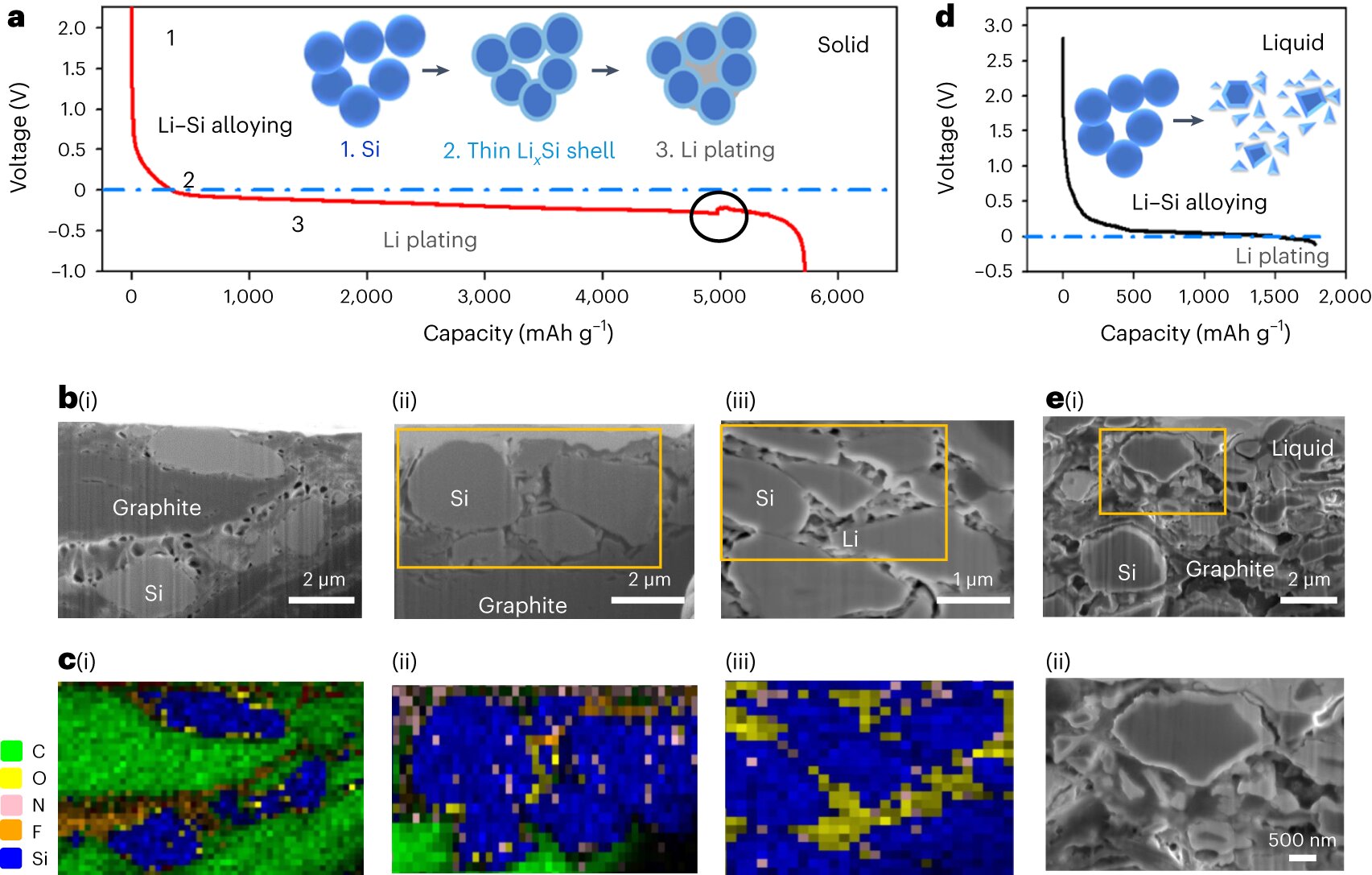Solid state battery design charges in minutes, lasts for thousands of cycles::Researchers from the Harvard John A. Paulson School of Engineering and Applied Sciences (SEAS) have developed a new lithium metal battery that can be charged and discharged at least 6,000 times—more than any other pouch …



Ok, I am interested in anyone with specific knowledge on this topic indicating whether the first order mental image I have of battery tech is correct?
The way I understand it is that the highest energy density batteries are your non-rechargeable lithium cells like watch batteries. Rechargeable lithium-ion cells have perhaps half the capacity due to the fact that they need to add measures that prevent these dendrites, as mentioned in the article, from forming. So the Holy Grail here is to develop a rechargeable technology that prevents the dendrite problem without sacrificing capacity so that you can get the best of both worlds? And that is what they are working on here with the solid state design. Am I close to the mark?
Lithium might be the lightest metal but it only has 1 free electron. Aluminum has 3 electrons per atom therefore theoretically it would have a higher density than lithium.
I’d say the “holy grail” is to move away from lithium entirely and instead move towards capacitors or hydrogen fuel cells. Both are far more promising, however right now they’re quite expensive and heavy.
In the case of capacitors, essentially you have two pieces of metal very close together. The closer they are together without touching the more energy you can store (the size of the metal pieces also matters - larger being better). Capacitors are old well understood technology, and in a laboratory setting you can make ones that are far better than a lithium battery. Getting that out of a lab and into mass production is more difficult and the best we have right now are quite heavy for the amount of power they store. Still, they do exist, and they work very well. A lot of electric trains, for example, will charge a capacitor when the train slows down for a station, take on a bit more charge while stopped at the station, then use most of the energy to accelerate up to speed. They might also get a bit more charge from overhead wires while travelling down the tracks.
In theory, a capacitor can charge or discharge instantly. In practice providing that much charge isn’t really practical, so it’s easier to charge them a little more slowly… but still way way faster than a lithium ion battery which wouldn’t even be able to do regenerative braking on something as heavy as a train - that’s just far too much power coming in.
Hydrogen is actually technically very light. Just 1kg (about 2lbs) is about the equivalent of the battery in a lot of EVs. However the equipment to convert that energy into motion at the wheels tends to be quite heavy and expensive. Costs are coming down however, and the Japanese manufacturers (Toyota/etc) seem to think it’s the right way to go. Time will tell if they’re right… but it seems like right now the biggest problem with those is just that there’s nowhere to buy hydrogen - compared to an EV which you can charge pretty much anywhere. Even in your own home. There are also prototype hydrogen aircraft. Something lithium will never be able to do.
My prediction is capacitors and hydrogen will both eventually displace lithium batteries. It’s more a question of when than if… I wouldn’t hold your breath though.
Capacitors are never going to have the volumetric density of chemical batteries. That kind of tech is not going to work for anything that needs to be small and mobile (which includes cars, which need to be small for the amount of energy they can store).
I know less about hydrogen fuel cells, but hydrogen also has very low energy storage capacity per unit volume (unless you can manage to keep it at very high pressure or very low temperature, which introduces its own challenges).
There will be applications that can use these types of things, but I doubt it will ever be a drop in replacement for chemical storage.
More than that, the storage tanks required to store an effective amount of hydrogen are insanely heavy and inefficient. A full tank might be only 6% hydrogen by weight, the rest being the weight of the tank itself.
The tanks are kept under extremely high pressures to achieve acceptable storage density, so safety is a concern as well. Unless this problem is solved I don’t see fuel cells replacing batteries in transportation.
A big factor in this is that Japan’s overall energy transition strategy is heavily focused on hydrogen, and has been since the 1970s. Back then hydrogen was considered one of the promising alternatives alongside biofuel and battery electric vehicles. Today battery electric has taken a clear lead and fuel cells are nowhere close, but Japanese industry is already heavily invested in hydrogen tech (and receives substantial government subsidy).
There is some potential for hydrogen still. It’s probably the only feasible means of decarbonising heavy industries such as steel production. It’s a potential option for grid-scale energy storage, given that it’s fairly easily produced using surplus renewable energy.